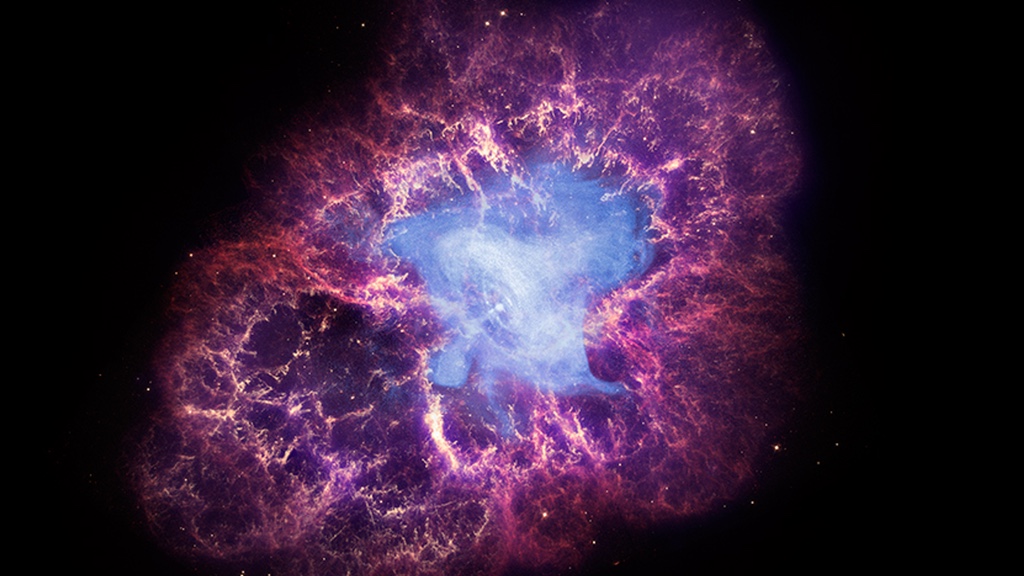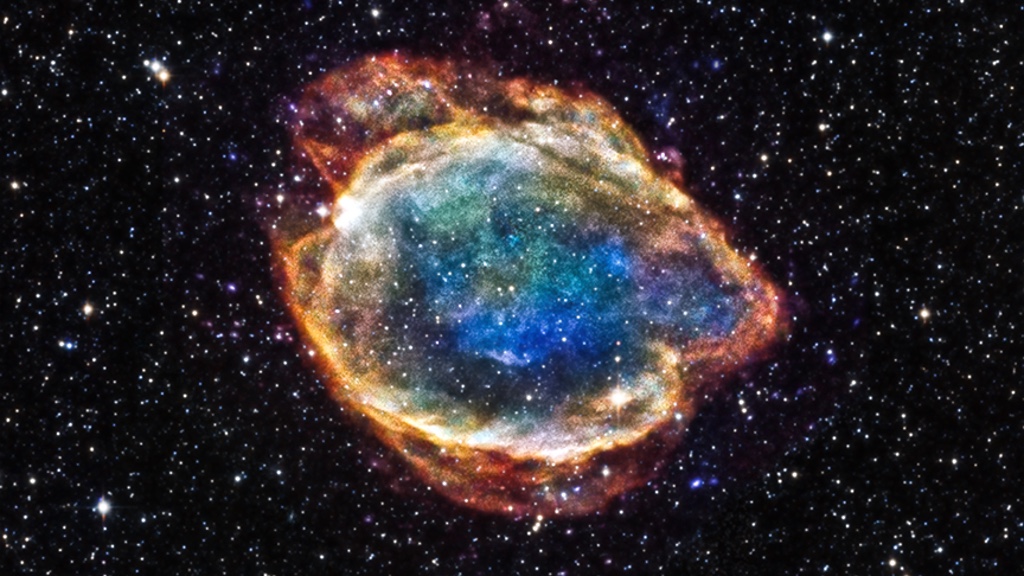Sometimes, the best telescopes on Earth need a little help making their observations more meaningful. NASA announced yesterday that it had decided to fund the Imaging X-ray Polarimetry Explorer (IXPE, pronounced ix-pee) mission, a polarised X-ray telescope, to help the bigger telescopes explore some of space’s strangest phenomena — including the dead remains of exploded stars and galactic lighthouses called pulsars.
NGC 6357, taken by Chandra (Image: X-ray: NASA/CXC/PSU/L.Townsley et al; Optical: UKIRT; Infrared: NASA/JPL-Caltech)
NASA already has some stellar X-ray telescopes, most notably the Chandra X-Ray Observatory. The IXPE, however, is special in that it measures polarised X-rays. Light rays are usually unpolarised, meaning the vibrations of the waves happen in many different directions. Polarisation realigns the vibrations in a specific direction or set of directions — for instance, up-and-down or in a circle. No other NASA telescope can analyse these specific organised rays, Paul Hertz, Director of the Astrophysics Division in the Science Mission Directorate at NASA, told Gizmodo.
IXPE isn’t going to produce hyper-crisp images like Chandra does. “It’s much blurrier,” said Hertz. Instead, IXPE will add specific details that Chandra can’t see around some of the weirdest objects in space. The telescope, which is scheduled to launch in 2020, is much cheaper, priced at a comparatively budget $US188 million ($257 million), compared to the billions that funded Chandra. Its funding comes from the Explorers program, which is kind of like NASA Shark Tank, allowing scientists to apply for NASA funding and resources for smaller space-based science missions.
Because of the IXPE mission’s smaller size, Hertz thinks of it as a trial-run to see how much value polarised X-rays have to offer. “If astronomers decide it’s critical information,” said Hertz, “you can imagine putting an instrument like this on a Chandra follow-up.”
Here are some of the most interesting astronomical questions IXPE could help us understand:
How Do Black Holes Shape Their Galaxies?

The region surrounding Sagittarius A, the black hole at the center of the Milky Way (Image: NASA/CXC/Univ. of Wisconsin/Y.Bai, et al.)
Black holes are masses so dense that even light can’t escape the pull of their gravity. Their powerful gravity also affects the things orbiting them, which can create X-rays that can still reach us. Chandra took this picture of Sagittarius A, the supermassive black hole at the centre of our own Milky Way galaxy — the brightest orange region at the exact centre of the image represents the light surrounding the black hole. Note that the image shows the X-rays converted into the colours of visible light, and not what we humans would actually see.
IXPE will improve our understanding of black holes and how they effect neighbouring space, said Hertz. “If a black hole is spinning, then it distorts space around it,” which could polarise the X-rays, he said. “IXPE can detect that, and Chandra cannot.”
What’s Up With These Massive Stellar Magnets?

A composite image of the Crab Nebula and its pulsar, the bright dot at the center (Image: X-ray: NASA/CXC/SAO/F.Seward; Optical: NASA/ESA/ASU/J.Hester & A.Loll; Infrared: NASA/JPL-Caltech/Univ. Minn./R.Gehrz)
Pulsars are a type of rotating neutron star — another incredibly dense object that distorts the space around it that results from a collapsing star. Pulsars also have strong magnetic fields, and emit beams of radiation as they spin, kind of like a lighthouse. The pulsar in the image above sits at the exact centre of the Crab Nebula, the remnant of a supernova.
“There’s a debate among astronomers about what the shape of the magnetic field is” surrounding the pulsar, said Hertz. “The different theories… give rise to different polarization signals.” IXPE will help scientists understand which theory is correct. Understanding pulsars better is very important to astronomers; the spinning masses make incredibly accurate clocks, so their regular blinking as they rotate helps us measure the vast distances of space.
How and Why Do Stars Explode?

A composite image of supernova remnant G299.2-2.9 (Image: X-ray: NASA/CXC/U.Texas/S.Post et al, Infrared: 2MASS/UMass/IPAC-Caltech/NASA/NSF)
Supernovae, stars that have died explosively, leave behind hot glowing remnants of X-rays, like this image taken by Chandra. Unlike pulsars and black holes, the X-rays don’t stem from a single source, but from an extended field.
Observing the polarised X-rays “will be able to tell you something about the star that exploded, its magnetic structure, how it exploded and how the exploded transmitted its magnetic field into the supernova remnant,” said Hertz. “That’s something we’ve never been able to do before. The people who want to understand how supernovae happen are excited about this possibility.”
[NASA]
